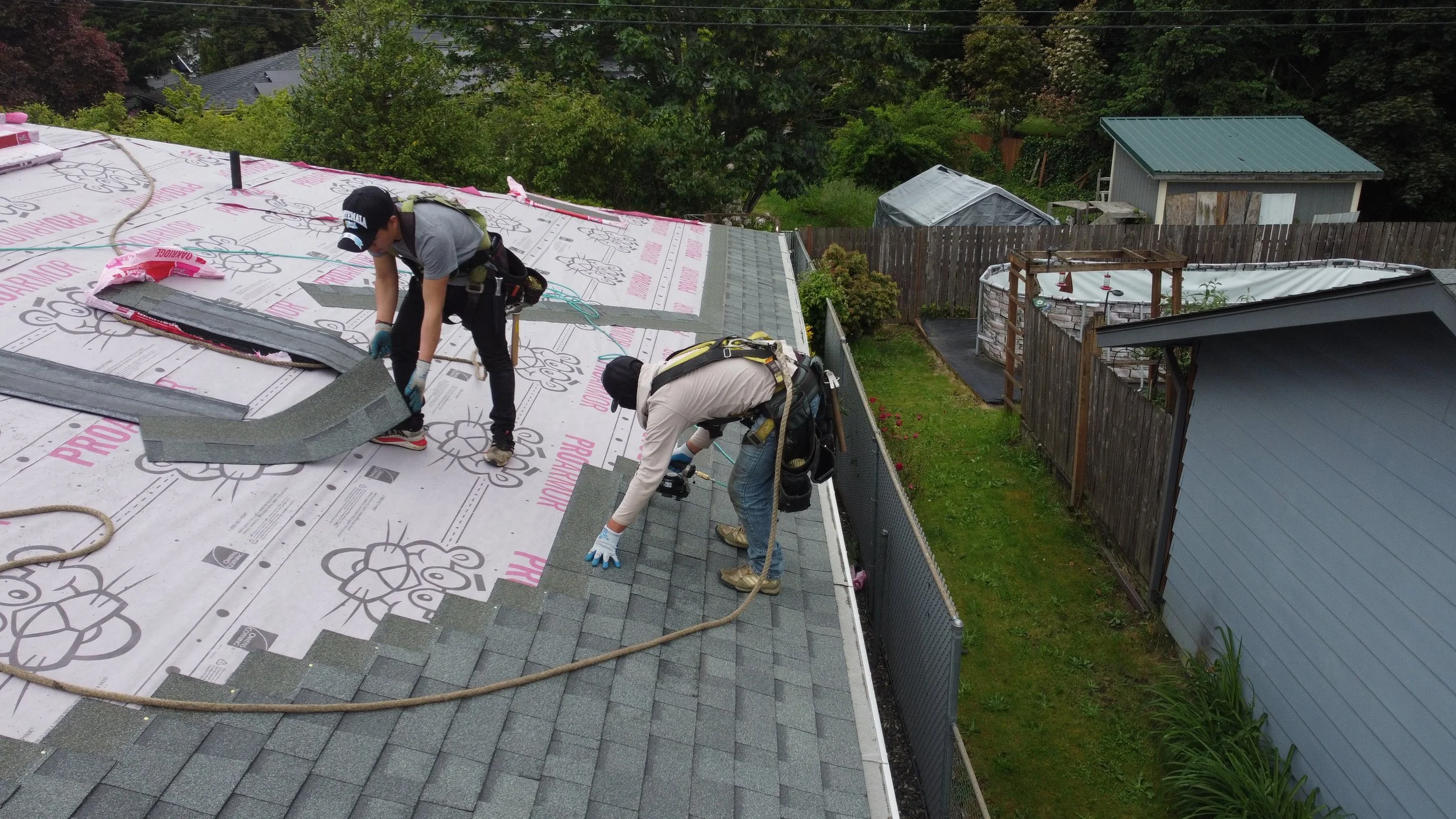energy-efficient roofing options to lower utility bills.
When it comes to lowering your utility bills, one of the smartest and most overlooked upgrades is your roof. An energy-efficient roofing system can reduce the amount of heat your home absorbs in the summer and retains in the winter, helping you save significantly on heating and cooling costs throughout the year. More than just a protective layer, your roof plays a huge role in your home’s overall energy performance.
Homeowners in the Pacific Northwest are no strangers to fluctuating weather—from hot, sunny summers to long, damp winters. Choosing the right roofing material and color can help balance your home’s internal temperature and reduce the strain on your HVAC system. Whether you're replacing an old roof or planning ahead, investing in energy-efficient roofing pays off in comfort, cost savings, and environmental impact.
Not sure where to start? Below are some of the most effective roofing options to improve your home’s energy efficiency and keep utility costs down—without sacrificing durability or style.
COOL ROOFING MATERIALS
Cool roofs are designed to reflect more sunlight and absorb less heat than traditional roofs. Materials like white TPO (Thermoplastic Polyolefin), light-colored metal, or specially coated asphalt shingles can lower roof surface temperature by up to 50°F. This directly reduces the heat transferred into your home, especially important in warmer months. In regions with full sun exposure, a cool roof can make a noticeable difference in indoor comfort.
METAL ROOFING
Metal roofs have become a popular energy-efficient choice for both modern and traditional homes. Not only are they extremely durable and long-lasting, but they also reflect solar radiant heat, which can reduce cooling costs by 10–25%. Light-colored or specially coated metal roofing panels increase solar reflectance even more, making them ideal for eco-conscious homeowners looking for long-term savings.
COMPOSITE AND ENERGY STAR® SHINGLES
If you prefer the look of asphalt shingles, there are energy-efficient versions available that meet Energy Star® standards. These shingles are engineered with reflective granules to reduce heat absorption and are a great choice if you want the look of a traditional roof with added energy savings. They're also widely available and easy to install, making them a convenient and affordable upgrade.
PROPER INSULATION AND VENTILATION
No matter which roofing material you choose, it’s crucial that your attic is properly insulated and ventilated. Insulation keeps your home’s conditioned air where it belongs—inside. Ventilation helps release trapped heat and moisture, extending the life of your roofing materials and keeping your attic from becoming a heat trap. This balance is key to maximizing energy efficiency and reducing long-term utility costs.
WHEN TO UPGRADE
If your current roof is over 20 years old, showing signs of wear, or simply wasn’t built with energy efficiency in mind, it may be time to consider a replacement. New roofing systems are engineered to meet higher efficiency standards and are often eligible for rebates or tax incentives, especially when using certified materials.
FREE ESTIMATES FROM AE&I ROOFING AND CONSTRUCTION
At AE&I Roofing and Construction, we help homeowners throughout Vancouver, Washington and Portland, Oregon choose the best energy-efficient roofing system for their home and budget. Whether you’re exploring cool roofing options, metal upgrades, or just want to improve your insulation and ventilation, our expert team is here to help. We offer free inspections and estimates to get you started with no pressure. Contact us today and take the first step toward a more efficient and affordable home.
CALL AE&I CONSTRUCTION FOR HELP FROM THE PROFESSIONALS.
(360) 209 - 6818


